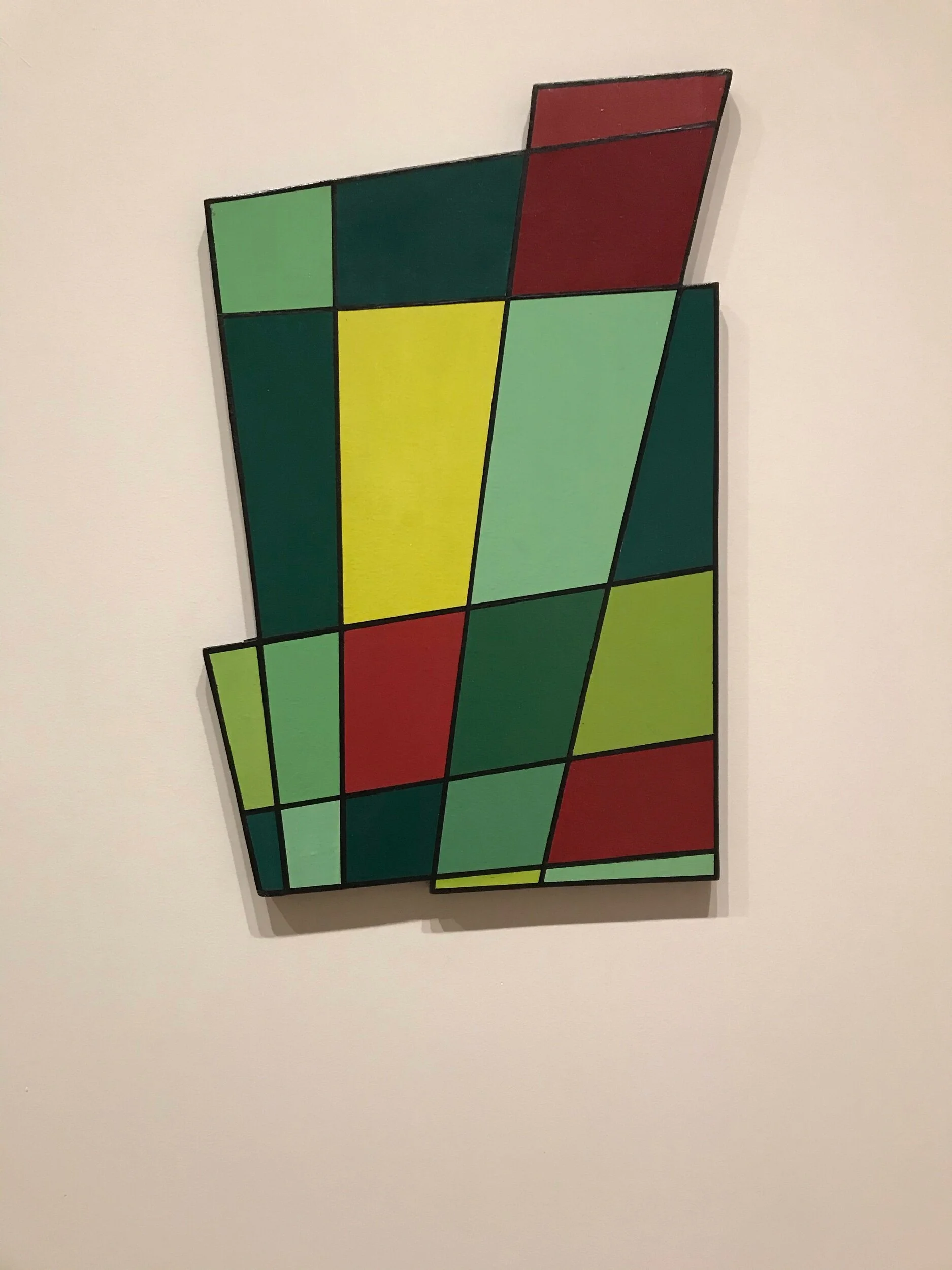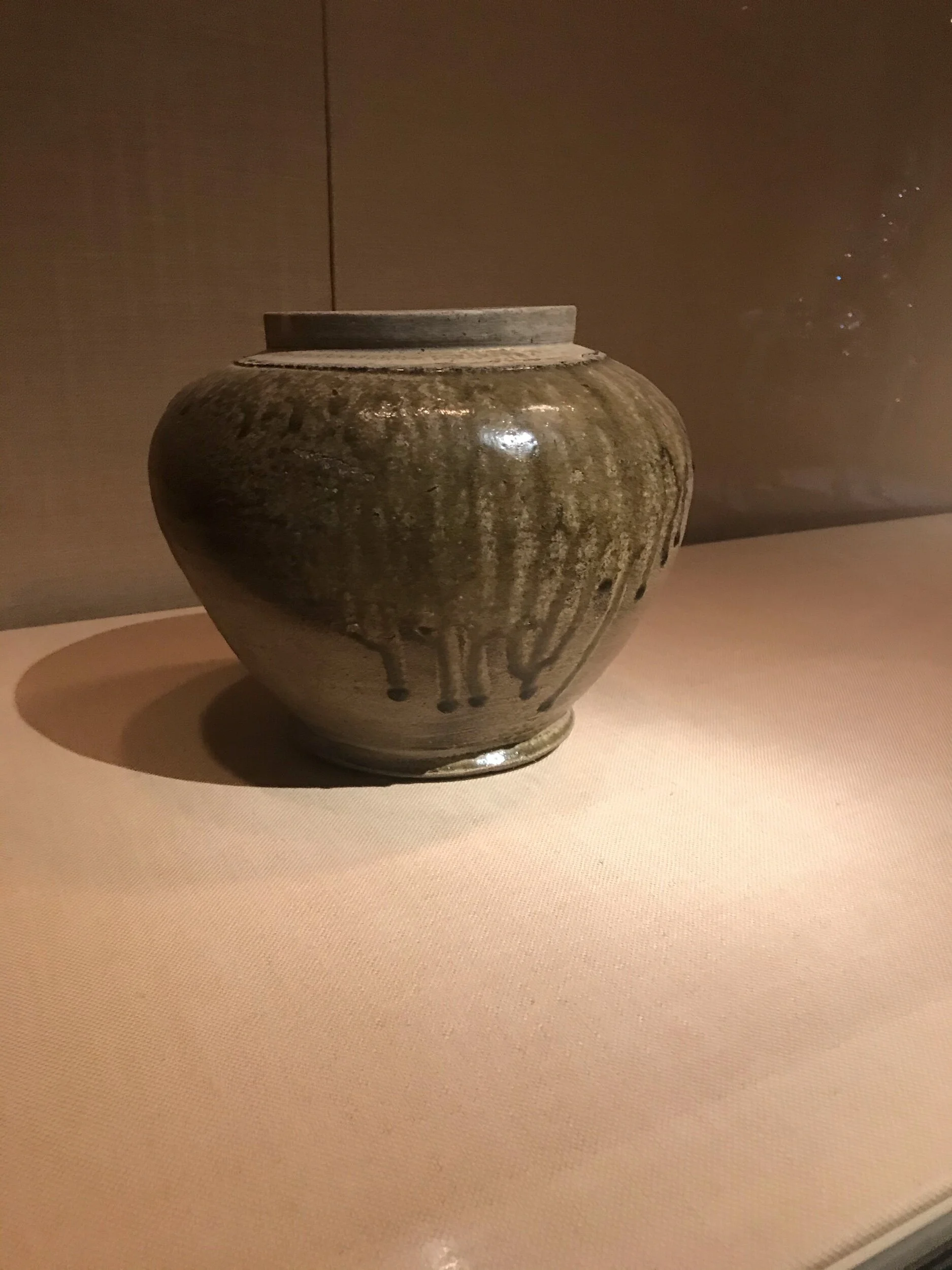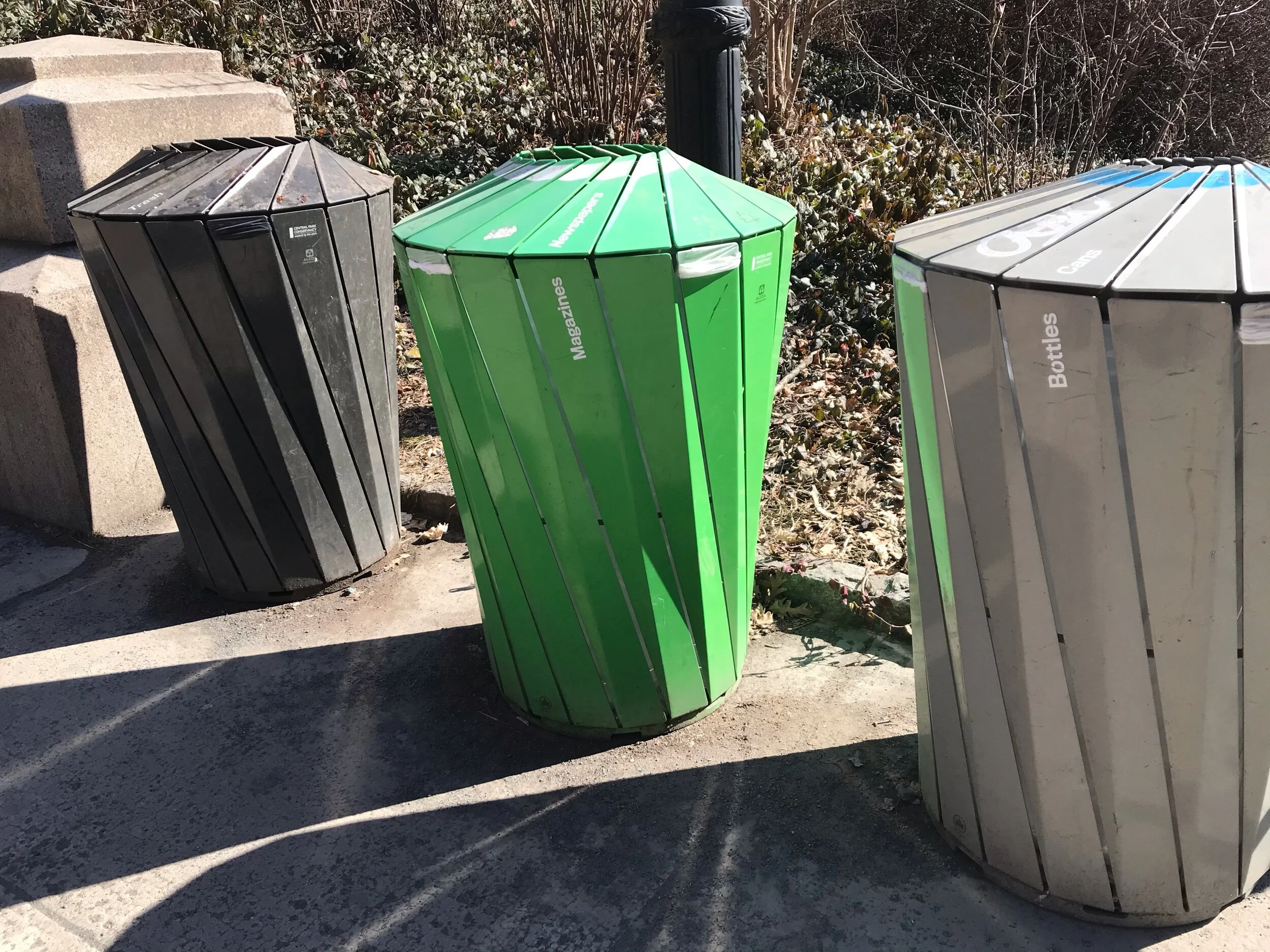Switching from F2F to Online Teaching due to Coronavirus
Due to “an abundance of caution”—about Covid 19 aka coronavirus—my university has switched face to classes over to online for the coming weeks. I have been thinking about this shift for a few weeks, and actively working on this shift since I saw the email four hours ago. Maybe some professors get paid enough for this, but junior faculty at public teaching institutions don’t, to say nothing of contingent faculty.
Making the switch elegantly would take far more time than I have, but even switching inelegantly makes the importance of medium so clear. This is abundantly obvious to anyone who has converted a F2F course to online, or, say concerted a recipe designed for roasting in an oven so that it would work as a freezer meal for an Instant Pot. Since I believe that we should “cancel everything,” I think this tremendous workload is worth it.
But I can’t help but be sad about what will inevitably be lost in the shift: student presentations that typically lead to students actually asking classmates if they have feedback on tricky points or if they have questions (without my intervention ! It’s beautiful!) will be cancelled. Moments of discovery that emerge because of a particular classroom dynamic and semi-off-topic comment will never happen. In meeting the reality of the situation, sometimes shifts like this are necessary.
In meeting the reality of the fact that people have to eat dinner every day (why!?!), it can be worth it to turn your crispy roasted potatoes and whatever into a risky stew, and maybe an apricot jam broth is a pretty awesome idea after all. In meeting the reality of a unknown pandemic, I’m hopeful that some great and unexpected moments of discovery will happen for me and my students.
This isn’t a referendum on online learning, or the thoughtful people who teach online well, but we should probably also remind ourselves and those around us that living online is not a solution to everything, even as it opens doors and provides options we need right now.
Sidewalk Chalk Walk
My kids invited me to take a sidewalk chalk walk recently. I was tired, but they were enthusiastic. They had a container full of big pieces of low-pigment sidewalk chalk. This is not a medium I find inspirational, but when a determined preschooler asks you to draw a tulip, “please,” with a winning smile, what can you say, really? I drew tulips. I drew daffodils. I drew unidentifiable flowers in pale pink, washed out orange, and barely yellow yellow. They a really nice bright blue and some beautiful teal, but those were too popular.
Working with imprecise tools that doom you to failure is typically annoying. But taking a sidewalk chalk walk is amazing.
My pre-K-er did not compliment my efforts at drawing, as instructed, “a fluffy yellow chicken.” She asked: “Why does that chicken look too much like a person? Or a duck?” I kind of wanted to draw a chicken person, but I was hoping she wouldn’t notice. I was not trying to draw a duck.
The medium, low quality chalk left out in a storm last fall on rough sidewalk with scattered leaves, is a quintessential blunt instrument, and is the perfect scapegoat. I can joyfully forget that I rarely draw, don’t remember what little I used to know, and forget what baby chicks looks like.
Working with imprecise tools that doom you to failure might be the most freeing of possibilities. It’s the perfect antidote for people like me who tend to want things to sort of work out. It’s also perfect because when the rain comes, my chicken person will be gone forever, and I can take another sidewalk chalk walk.
Chicken duck person. Chalk on sidewalk.
Dispatch 4 from a Novel Formerly Called Red State
If you’re interested, start with Dispatch 1
Rhetoric Department’s Morning Briefing for White Hall
The Tres Amigos departed Lexington 5 am. The plane went down in flames in a corn field near Little View.
Recommendation 1: Emphasize the continued safety of air travel in all comments to media. This will focus the public’s attention on their own safety and suggest pilot error.
Recommendation 2: In the coming days, allow the possibility of mechanical failure to gain traction as the “real story.”
Recommendation 3: If we are responsible or wish to be thought responsible, bring up corrosion due to saltwater because someone, probably LB among others, will figure that out and ask about it at a news conference.
Recommendation 4: If we do not want any responsibility, deploy Lexington Blues Health and Safety Manager et al to state radio with distracting pronouncements about safety of teams. Mention seasonal allergies for additional distraction.
Overwhelm Yourself to Jumpstart Creativity
Setting up life to foster synthesis, putting together ideas and materials in a way that leads to new connections and concepts, will help develop creativity. Considering how things fit together is a kind of exploration. One counterintuitive way to explore and find creative ideas is to deliberately overwhelm yourself with input—specifically the creative output of others.
In my field and graduate school program, studying for comprehensive exams meant spending about a year reading hundreds of books and articles, some from lists of books chosen by others years ago that were barely interesting and others that I selected and had to defend me selection of. I read so much in such a short period of time that I obviously could not fully absorb what I was reading, but my job was to synthesize it and remember it all so that at the end of the study period, I could take three full-day open-book essay exams. I had the maximum number of books checked out from two libraries and stacks of books with post-it notes all over my apartment. They were organized by theme, sort of. I had typed notes and handwritten notes. I would listen to audiobooks if I wasn’t reading.
I regularly calculated my weekly reading pace and it was never fast enough. I frequently timed my reading pace, calculating how long it would take me to finish a book, and realized I had to skip along. At a certain point, it wouldn’t matter if I read the words, because there wasn’t enough room in my brain to hold it all together.
It was absolutely ridiculous.
What this absurd process did, though, racing through stacks of books and complex articles day after day, is create an atmosphere of synthesis. I made connections I would not have made under normal conditions. I had intriguing ideas that came from the juxtaposition of listening to The Scarlet Letter during a lunch break after zipping through not an article on shame, because that would make sense, but a dull tomb of literary criticism from the 1980s that was definitely written in response to another not terribly compelling 1980s piece of literary criticism that I would read two weeks later, when it happened to show up via interlibrary loan. The interesting thing about this whole mess is that I had intriguing ideas at all.
The good news is that grad school is far from the only way to overwhelm yourself into a state of overwhelmed creativity. More feasible opportunities to invite chaos abound. Here are three:Rather than spending all of your time at a museum in one time period, and rather than trying to wander through wing after wing, pick two disparate exhibits: Go from, say, ancient Egypt to contemporary textiles in just an hour or two. Rather than reading one book at a time, or a couple of books, have a poetry collection, two nonfiction books, a graphic novel, and three novels going at once. Rather than spending the week perfecting one soup idea or trying ten variations of vegetable soup this month, browse recipes promiscuously and let that coconut lime idea into your mushroom toast plans.
Because it is deliberately, overwhelmingly chaotic, exposing yourself to a wide range of creative content in a condensed time-frame allows you to make unexpected connections and to develop surprising concepts.
To wrap up, here is the final lesson from grad school: I remember my year of studying for exams as a time of eating hastily and wondering if I had time for a shower. I would take a jog and love it even though I hate jogging.
That’s the most crucial bit of wisdom. Stop the input. Reflect.
And take notes: I cannot remember what I realized about The Scarlet Letter, and because it was quirky, idiosyncratic, not useful for any possible comprehensive exam, I failed to write it down. All I remember is the surprise of discovery, which is probably more valuable anyway.
Boxers and Saints: A Review
Gene Luen Yang’s Boxers and Saints is a critically acclaimed historical graphic novel set. I like a pretty wide range of fiction, but a magical realist epic graphic novel would not be something I would expect to love. And I love Boxers and Saints. I’ve read it a few times, sometimes dipping in and out, but also straight through more than once. This book review is pretty spoiler free.
One book features a “Boxer” and the other a “saint.” The graphic style is appealing to me, the time period complex and controversial, and the two novel approach compelling and an excellent strategy for addressing differing perspectives.
This dual perspective approach is central to what makes Boxers and Saints work. Also central is the masterful balance of the individual and small scale with the scope of the Boxer Rebellion. Somehow, I think Yang’s trademark magical realism makes this balance work.
I would not expect all of this to work, at least not for me: The scale is epic, not something I normally seek out. On top of that, Boxers and Saints healthy dose of magical realism puts it in another genre I do not spend significant reading time exploring.
For me, the fact that this is a graphic novel designed with a relatively young audience in mind (despite some very violent and disturbing graphic scenes and themes) is probably crucial. Boxers and Saints might be classified as YA. That means that I can read quickly, and the many references to historical context that I don’t fully understand do not compel me to research. Yang invites readers with little historical knowledge to simply read the story, without requiring them to feel stupid or devote themselves to catching up. Boxers and Saints is great way to learn and teach about the Boxer Rebellion, a significant, complicated, and relatively recent episode of modern Chinese history that many Americans have barely heard of. It is not a comprehensive history, and it does not set out to be.
What it is is an intimate piece of epic storytelling. We see Little Bao watching his older brothers and seeking to develop his own role. We see peopl desperate for a meager meal and sharing a cup of tea in the night. That balance of the individual and small scale with the scope of the Boxer Rebellion is ambitious. There is a surprising amount of exploration of character, a none-too-subtle but also not overbearing exploration of human motivation, violence, identity, culture, and religion.
This is a great read for anyone interested in the Boxer Rebellion, Chinese history generally, coming of age, Christianity, or historical graphic novels such as the deservedly popular Maus and Persepolis, or the less well-known Aya and Dare to Disappoint.
Time of Day
Time of day matters. And 2:30 pm is not the time. Afternoon is just a lull, a dip, and 2:30 is peak afternoon lull.
It is not the right time for anything, except maybe the last caffeine drink—or decaf that you’re half pretending has caffeine—of the day. In fact, that is exactly what it is the time for: a coffee! A cappuccino! You can do hot or iced. You can add a flavor or a sprinkle, or not. Your choice.
2:30 is not the time to take on a creative or complex project. It is not even the time to try to have a thoughtful conversation. A plan, an idea, a question with the power to inspire as late as 1 pm will have had its potential and significance mysteriously drained away by 2:30. There is no away around it, so you might as well lean in. If you can’t schedule a nap at 2:30, try to schedule your most pointless meeting for 2:30. Or use that time to do a simple, repetitive task like laundry or responding to surveys.
Set yourself up for success by matching up low energy times of day with tasks that require minimal output. 2:30 is where time management and energy management meet.
Efficiency vs Savoring Transitions
Efficiency experts tend to ignore transitions. The reality is that one doesn’t toggle instantly from being asleep to being at work, even if work is the kitchen table mere steps away. An efficient good morning looks like this:
5:30 am wake up (efficient people get up really early)
5:31 brush teeth and throw on workout gear (efficient people work out early on the morning)
5:30 (running or yoga)
6:30 (great workout! Showering now)
6:40 (get dressed and have breakfast)
6:50 (hard at work, or at least on your commute and doing something productive)
An actual good morning is literally over an hour of transitions. Getting out of bed. Checking the weather: there are a few raindrops clinging to the window, but it’s not raining now. Making coffee. Staring at the wall wondering about painting it a different color. Reading parts of several newspaper articles.
This is all significant transition work. One doesn’t simply become awake. One spends some time trying to come to terms with the fact of the day ahead. Getting a grip on reality.
Even if you’re a morning exerciser who thrives on rushing through this significant transition, there are other transitions throughout a day, and they deserve to be taken seriously, savored, rather than being eliminated in the name of getting things done.
The transition is the liminal space, the time in between. It is after and before; it is a time of possibility. Things become visible, or nearly so, that would at other times be obscured in the darkness or overwhelmed by the light. Transitions are times to be valued, not eliminated.
Green Objects
When things are green, I tend to like them just a bit better.
The green one is clearly the best.
Dispatch 3 from a Novel Formerly Called Red State: Weekend Fiction
The farmer
Andrew McCurtain rose early, as was his habit. He liked to make himself a cup of strong sweet tea, watch the mist rise, and check on his fields and his barns before things started happening around the farm. If he had been honest with himself, he would have acknowledged that what he really liked about the early morning hours was that his old father was not yet awake. Once his father, Andrew Senior, was about, things were crowded on the farm, though it was a generous 300 acre piece, with an additional 100 up the way. Young Andrew, not quite 32 years old, got along well enough with his parents, who lived in the main farmhouse, but he was a busy, industrious young agriculturalist, and he needed some time alone on the farm to do what needed to be done. In his youth, Andrew had no interest in farming, but after some years away, years during which he made the disappointing discovery that he wasn’t as good at baseball as he had hoped, Andrew had begun to see that an ambitious man such as himself could do a lot with a piece of land such as his parents farmed.
Especially with his family’s ties to the mayoral dynasty of Little View. When the current mayor had first been elected, after her father and grandfather before her, she had succeeded in bringing the fast train line to Little View, and she had done it by purchasing a plot of his family’s land. Having a fast train line come through the station less than five miles away was just what he needed. And having a mayor who owed him was a game changer.
The soil was rich, the tree lines were crooked, the lightning bugs made a beautiful show in the early summer rising from the fields blinking out their interest in sex. That was how Andrew thought of it. But that wasn’t important. What was important was that the land was zoned for corn. Bourbon corn, of course. Technically.
Andrew set his empty tea mug, a solid Kentucky stoneware with a cobalt blue lip, down beside the sink in the kitchen. He walked out to the secondary barn, the cat barn as they called it, though now all the cats had switched their allegiance back to the main barn in the mysterious way of cats. Here in his private domain, one of the tack rooms was filled with sacks of corn. The sacks were a smooth sturdy hemp, undyed, with a label “Bourbon Corn,” the date of harvest 20--, and McCurtain Farm with a little sketch of a sprout. The labels were hemp labels, re-usable, and printed with Commonwealth-made soy-based ink. People liked personal touches like that, and all of the local companies he worked with became his friends. Smells of oil and gas mixed with the earthy old barn smell that permeated the place. There was a hint of manure, though cows hadn’t inhabited the cat barn since Andrew was a boy. Andrew turned on the CB radio, listening to the local chatter, both official and unofficial. All was as it should be.
The biggest news was that a neighbor up the road had lost some chickens in the night. The coop yard was a mess, with several mutilated birds. “Wasteful little bandits,” Andrew muttered. He knew his neighbor’s double latch gate. It should have been enough, especially with plenty of more accessible food sources about. But the coons were getting cleverer and cleverer by the sound of it. Time for a better latching system on his own coop, he thought, as he listened to the distant sound of a single-engine plane. Many of the local farmers shared a crop-duster, a few had their own. Some might fly into Louisville, though it took about as long as the train. The sound was growing louder and louder. The pitch sounded different than he was used to, higher, faster. It didn’t sound right. He went over to his CB, tuned to the main unofficial local station, “Morning. This is Buddy Blue. Are we supposed to have company today?” He heard a rumble and thought he felt the ground shake. “Anyone else hearing this?”
He tuned his radio to the safety and alerts channel. “Ground to air, Little View,” he said. “Everything OK?”
As he waited for a response, he looked out the open barn door over the field, bright in the morning sun, just in time to see a streak of red and white as the plane skimmed across the top of his ripe corn field. There was a crash, the whomp of aviation fuel as the air rushed in and exploded out as it ignited. Andrew stood, holding his radio, frozen. He didn’t hear a mayday or any other signal from the plane. “Mayday. Mayday,” he said into his radio, but he had forgotten to hold down the “talk” button on his handset.
-
January 2023
- Jan 21, 2023 Book Review: Lolly Willowes Jan 21, 2023
-
August 2022
- Aug 17, 2022 Book Reviews vs Memes Aug 17, 2022
-
July 2022
- Jul 30, 2022 Netflix’s Persuasion makes me want to re-read Mansfield Park Jul 30, 2022
- Jul 21, 2022 Why I don’t write book reviews for nonfiction Jul 21, 2022
-
July 2021
- Jul 6, 2021 Book Review: Lake Life Jul 6, 2021
-
June 2021
- Jun 13, 2021 Unfinished summer reading and the advantages of a hard copy Jun 13, 2021
-
March 2021
- Mar 13, 2021 Why is reading a book only once the norm? Mar 13, 2021
-
January 2021
- Jan 29, 2021 19th c Canadian Chick Lit Jan 29, 2021
-
December 2020
- Dec 31, 2020 Current Reading at the end of 2020, a partial list Dec 31, 2020
- Dec 22, 2020 Books: Interest rates and death Dec 22, 2020
- Dec 3, 2020 Is it possible to read “too many” books at once? Dec 3, 2020
-
November 2020
- Nov 28, 2020 Family Poems: Wind Nov 28, 2020
- Nov 3, 2020 Family Book Review: The Water Dragon Nov 3, 2020
-
October 2020
- Oct 8, 2020 Listen to Antonia Bembo Oct 8, 2020
- Oct 3, 2020 Inktober as an Inspiration Oct 3, 2020
-
September 2020
- Sep 28, 2020 What do we mean when we say “The Classics”? Sep 28, 2020
- Sep 28, 2020 Family Book Review: Mangoes, Mischief, and Tales of Friendship Sep 28, 2020
- Sep 19, 2020 Looped freewriting to generate creativity Sep 19, 2020
-
August 2020
- Aug 28, 2020 How a Story Ends Aug 28, 2020
- Aug 19, 2020 Family Book Review: The Seekers Aug 19, 2020
-
July 2020
- Jul 24, 2020 Unfinished Book Review: Ducks Newburyport Jul 24, 2020
- Jul 23, 2020 Book Review: The Magical Life of Long Tack Sam Jul 23, 2020
-
June 2020
- Jun 30, 2020 Catching up on what is good Jun 30, 2020
- Jun 29, 2020 The Annoyance of Wasted Effort Jun 29, 2020
- Jun 25, 2020 Genoise cake and the pursuit of perfection Jun 25, 2020
- Jun 5, 2020 Supernatural Bureaucracy Jun 5, 2020
-
May 2020
- May 22, 2020 Playing with Ink May 22, 2020
- May 21, 2020 Clothes and Character May 21, 2020
- May 20, 2020 Strawberry Season May 20, 2020
- May 19, 2020 A Prompt and a Catalogue May 19, 2020
- May 18, 2020 What Day is this? May 18, 2020
- May 15, 2020 Writing as Frustrating and Satisfying May 15, 2020
- May 13, 2020 Re-reading A.S. Byatt’s The Children’s Book May 13, 2020
- May 12, 2020 Blueberry Syrup May 12, 2020
- May 11, 2020 Blueberry Lime Thyme Cocktail or Mocktail Idea May 11, 2020
-
April 2020
- Apr 15, 2020 Weekly posts: a Productivity Pause Apr 15, 2020
- Apr 9, 2020 The Joy of Tulips Apr 9, 2020
- Apr 2, 2020 The Satisfaction or Baking Bread Apr 2, 2020
-
March 2020
- Mar 31, 2020 Take Time to Do Nothing Mar 31, 2020
- Mar 27, 2020 Collaboration and Creative Freedom Mar 27, 2020
- Mar 26, 2020 Maple Acorn Cakelet Party Mar 26, 2020
- Mar 25, 2020 Slow Stitch: a Book Review Mar 25, 2020
- Mar 24, 2020 Intruder in the Dust and Vintage Paperbacks: A Book Review Mar 24, 2020
- Mar 23, 2020 Sour Cherry Pie Cocktail and Anne with an e Mar 23, 2020
- Mar 21, 2020 Dispatch 6 from a Novel Formerly Called Red State: Weekend Fiction Mar 21, 2020
- Mar 21, 2020 Multiples Mar 21, 2020
- Mar 19, 2020 Tornado Warning Mar 19, 2020
- Mar 18, 2020 Leftovers are the Best Mar 18, 2020
- Mar 17, 2020 What You See out Your Window Is a Sculpture Mar 17, 2020
- Mar 16, 2020 Planting Bulbs Mar 16, 2020
- Mar 14, 2020 Dispatch 5 from a Novel Formerly Called Red State: Weekend Fiction Mar 14, 2020
- Mar 14, 2020 On Building a Tiny Path Mar 14, 2020
- Mar 12, 2020 Looking Down Mar 12, 2020
- Mar 11, 2020 Planning Does not Equal Panic Mar 11, 2020
- Mar 10, 2020 Switching from F2F to Online Teaching due to Coronavirus Mar 10, 2020
- Mar 9, 2020 Sidewalk Chalk Walk Mar 9, 2020
- Mar 7, 2020 Dispatch 4 from a Novel Formerly Called Red State Mar 7, 2020
- Mar 5, 2020 Overwhelm Yourself to Jumpstart Creativity Mar 5, 2020
- Mar 5, 2020 Boxers and Saints: A Review Mar 5, 2020
- Mar 4, 2020 Time of Day Mar 4, 2020
- Mar 3, 2020 Efficiency vs Savoring Transitions Mar 3, 2020
- Mar 2, 2020 Green Objects Mar 2, 2020
-
February 2020
- Feb 29, 2020 Dispatch 3 from a Novel Formerly Called Red State: Weekend Fiction Feb 29, 2020
- Feb 28, 2020 The Stress and Pleasure of Not Knowing Where You Are Feb 28, 2020
- Feb 27, 2020 The Top Five Reasons not to Call an Agenda-free Meeting Feb 27, 2020
- Feb 26, 2020 Hendrick’s Gin Really Does Taste Like Rose and Cucumber Feb 26, 2020
- Feb 25, 2020 Robot Clothes Feb 25, 2020
- Feb 24, 2020 Ambivalent Recommendation—Masie Dobbs: A book review Feb 24, 2020
- Feb 22, 2020 Dispatch 2 from a Novel Formerly Called Red State: Weekend Fiction Feb 22, 2020
- Feb 21, 2020 How minimalism is a consumerist menace Feb 21, 2020
- Feb 20, 2020 I Made Two Rose Barrettes Feb 20, 2020
- Feb 19, 2020 Signs Feb 19, 2020
- Feb 18, 2020 Processes and Policies Aren't Totally Bad Feb 18, 2020
- Feb 17, 2020 Habits and Small Adventures Feb 17, 2020
- Feb 15, 2020 Dispatch 1 from a Novel Formerly Called Red State: Weekend Fiction Feb 15, 2020
- Feb 14, 2020 Don’t Care for Agatha Christie? Read The Murder of Roger Ackroyd Anyway Feb 14, 2020
- Feb 13, 2020 When Personal Growth Looks Like not Doing Something Feb 13, 2020
- Feb 12, 2020 Books and Beverages: My Favorite Absurd and Impossible Book Review Concept (1/???) Feb 12, 2020
- Feb 11, 2020 I Don’t Have a Personal Brand Feb 11, 2020
- Feb 10, 2020 2/100 I’m not a blogger and this is my blog (part II) Feb 10, 2020
- Feb 8, 2020 1/100 I’m not a blogger and this is my blog (part I) Feb 8, 2020

















